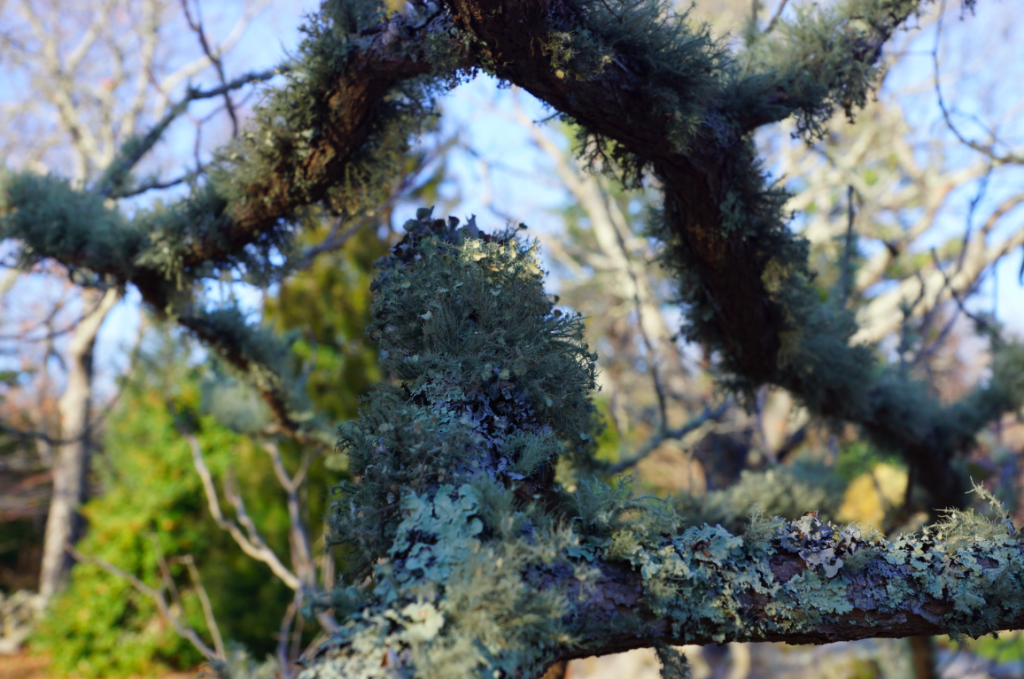Martha’s Vineyard is the only place I know that grows trees with coats like this. One of many miracles at the Polly Hill Arboretum. Patterns of lichen and mosses layered over the patterns of bark and branch.
I traveled to another island today – Manhattan – and on the train from Connecticut read Phoebe Caldwell’s amazing book on autism, Finding Me, Finding You. What got me was not only the descriptions of hypersensitivities, but the idea that the autistic brain often cannot discard sensory input, so that it builds up in layers upon layer until it is overwhelming and the person has a sensory meltdown, also called fragmentation.
By the time I arrived in the city I felt I had slipped into that slippery, chaotic sensory world of the autist, and by the time I caught the #4 train down to Union Square was completely overwhelmed. The scream of trains, the rivers of people, the clutter of sight and sound felt unendurable. There was no discernable pattern, and the only way I could see to cope was to basically shut down. A lot of people around me seemed to be doing that as well. But we were all coping in essentially socially acceptable ways. But I wondered, are we all – each of us in our own peculiar way – a little on the spectrum? What do each of us actually do to cope with the flood of data?
Working with Jacob, I got very interested in rhythms of exertion and recuperation – a concept that originated with Rudolf Laban, the dancer, choreographer and originator of Labanotation and Laban Movement Analysis. I wanted to see what Jacob’s exertion/recuperation rhythms were, and then got interested in the rhythms of his caregivers as well. I observed that actually Jacob was better at taking care of his need for recuperation than his primary caregivers, who are on, on, on.
More on exertion and recuperation tomorrow. I need to rest.
